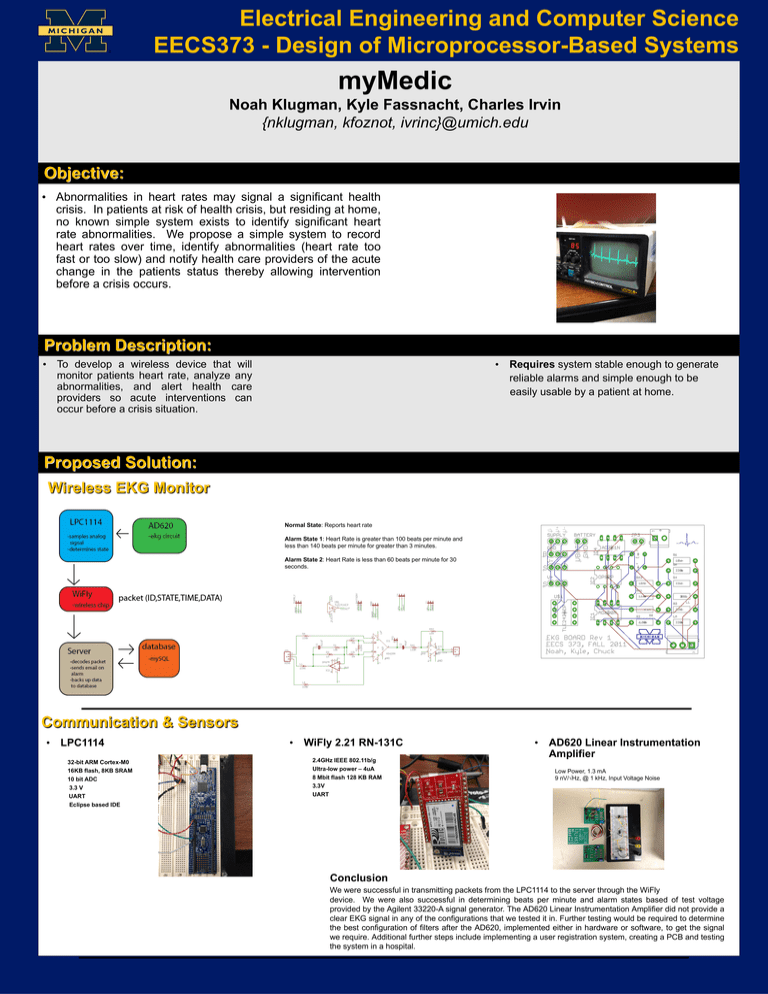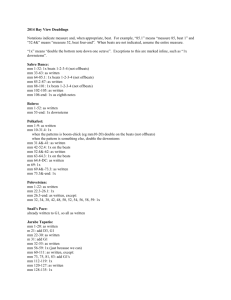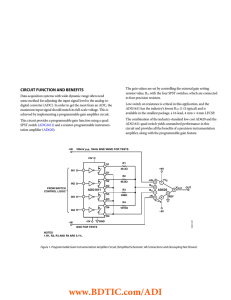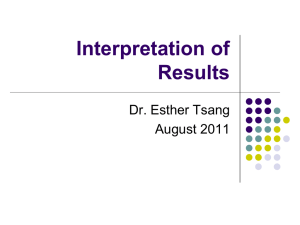ex5ppt - Electrical Engineering and Computer Science
advertisement

Electrical Engineering and Computer Science
EECS373 - Design of Microprocessor-Based Systems
myMedic
Noah Klugman, Kyle Fassnacht, Charles Irvin
{nklugman, kfoznot, ivrinc}@umich.edu
Objective:
• Abnormalities in heart rates may signal a significant health
crisis. In patients at risk of health crisis, but residing at home,
no known simple system exists to identify significant heart
rate abnormalities. We propose a simple system to record
heart rates over time, identify abnormalities (heart rate too
fast or too slow) and notify health care providers of the acute
change in the patients status thereby allowing intervention
before a crisis occurs.
Problem Description:
• Requires system stable enough to generate
reliable alarms and simple enough to be
easily usable by a patient at home.
• To develop a wireless device that will
monitor patients heart rate, analyze any
abnormalities, and alert health care
providers so acute interventions can
occur before a crisis situation.
Proposed Solution:
Wireless EKG Monitor
Normal State: Reports heart rate
Alarm State 1: Heart Rate is greater than 100 beats per minute and
less than 140 beats per minute for greater than 3 minutes.
Alarm State 2: Heart Rate is less than 60 beats per minute for 30
seconds.
Communication & Sensors
• LPC1114
32-bit ARM Cortex-M0
16KB flash, 8KB SRAM
10 bit ADC
3.3 V
UART
Eclipse based IDE
• WiFly 2.21 RN-131C
2.4GHz IEEE 802.11b/g
Ultra-low power – 4uA
8 Mbit flash 128 KB RAM
3.3V
UART
• AD620 Linear Instrumentation
Amplifier
Low Power, 1.3 mA
9 nV/√Hz, @ 1 kHz, Input Voltage Noise
Conclusion
We were successful in transmitting packets from the LPC1114 to the server through the WiFly
device. We were also successful in determining beats per minute and alarm states based of test voltage
provided by the Agilent 33220-A signal generator. The AD620 Linear Instrumentation Amplifier did not provide a
clear EKG signal in any of the configurations that we tested it in. Further testing would be required to determine
the best configuration of filters after the AD620, implemented either in hardware or software, to get the signal
we require. Additional further steps include implementing a user registration system, creating a PCB and testing
the system in a hospital.











